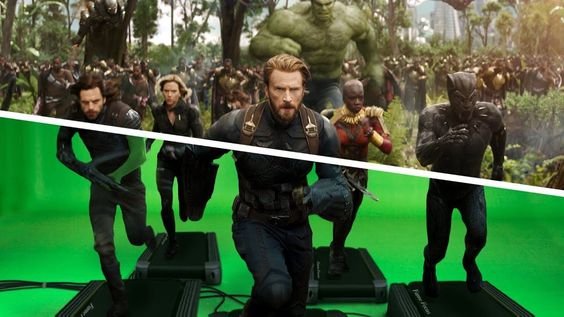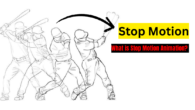
Uses of CGI
Computer-generated imagery (CGI) has revolutionized the world of entertainment, transforming the way movies, television shows, video games, and even advertisements are created. Computer-generated imagery (CGI) is the process of creating animated or still visual content with software. Its applications are vast, from simple animated logos to complex special effects in blockbuster films.

VFX: Enhancing the Imagination
Visual effects (VFX) are the processes by which imagery is created or manipulated outside the context of a live-action shot in filmmaking and video production. While CGI is often a component of VFX, VFX encompasses a broader range of techniques that include matte paintings, miniatures, and live-action footage integrated with CGI.
VFX allows filmmakers to create scenes that would be impossible, dangerous, or cost-prohibitive to capture in real life. For example, the creation of an entire fictional city or the depiction of a giant monster wreaking havoc is all made possible through VFX. This is particularly important in genres like science fiction, fantasy, and superhero movies, where imagination needs to be visually represented.
The scope of VFX goes beyond just entertainment. It’s also used in advertising, architecture, and even scientific simulations. The technology has grown to the point where it’s sometimes difficult to distinguish between what is real and what has been digitally created, making VFX an essential tool in modern storytelling.
Action VFX: Elevating High-Octane Sequences
Action sequences are a staple of blockbuster cinema, and they rely heavily on VFX to achieve the impossible. Whether it’s a car chase, a massive explosion, or a high-flying fight scene, action VFX bring these sequences to life in a way that practical effects alone cannot.
In many cases, action VFX are used to enhance or replace dangerous stunts. For example, actors may perform parts of a fight scene on a green screen, with the environment and additional action elements, like debris or fire, added in post-production. This not only ensures the safety of the performers but also allows for greater creativity in the design of action sequences.
Explosions, gunfire, and other high-intensity effects are often created using a combination of practical effects and CGI, with VFX artists blending the two to make the scenes as realistic as possible. The goal of action VFX is to heighten the excitement and intensity of the scene while maintaining believability, ensuring that the audience remains engaged and immersed in the story.
ActionVFX: Specialized Tools for Realistic Effects
ActionVFX is a leading provider of high-quality VFX stock footage, specializing in realistic, practical effects that can be seamlessly integrated into any production. Their library includes a wide range of elements like explosions, fire, smoke, debris, and more, all filmed in real environments to ensure authenticity.
Filmmakers and VFX artists use ActionVFX assets to add realism to their scenes. For instance, instead of creating an explosion from scratch using CGI, a VFX artist can use an ActionVFX explosion clip, which is then composited into the scene. This not only saves time but also ensures that the effect looks as realistic as possible, as it is based on real-world phenomena.
ActionVFX has become a go-to resource for VFX professionals across the industry, from independent filmmakers to major studios. Their products are used in a variety of media, including films, TV shows, commercials, and video games. By providing high-quality, realistic effects, ActionVFX helps creators bring their visions to life with precision and authenticity.
Visual Effects: The Art of Creating the Impossible
Visual effects (VFX) play a crucial role in modern filmmaking, allowing creators to bring their wildest imaginations to the screen. VFX encompasses a wide range of techniques, from simple compositing to complex simulations, all aimed at creating images that would be difficult or impossible to capture on camera.
The process of creating VFX typically involves several stages.
Pre-Visualization:
This is the planning stage, where concepts are sketched out and rough animations (often referred to as animatics) are created. This helps the filmmakers visualize the final product and make necessary adjustments before the full VFX production begins.
Modeling and Texturing:
In this stage, 3D models of characters, objects, and environments are created. These models are then textured to give them color, patterns, and surface details, making them look as realistic as possible.
Animation:
Once the models are ready, they are animated. This involves moving the models in a way that simulates real-life motion. For example, animating a character to walk, run, or fight.
Simulation:
This includes the creation of effects like fire, water, smoke, and explosions, which are simulated using complex algorithms that mimic the physics of real-world phenomena.
Compositing:
In this final stage, all the different elements – live-action footage, CGI, simulations, etc. – are combined into a single image or sequence. This is where the VFX artist ensures that everything blends seamlessly, making the effect appear natural and part of the real world.
The power of visual effects is its capacity to bring the impossibly possible to life.From creating entire alien worlds to transforming actors into fantastical creatures, VFX allows filmmakers to push the boundaries of storytelling, engaging audiences with visually stunning and emotionally compelling narratives.
VFX Animation: Bringing Characters to Life
VFX animation is a specialized field within VFX that focuses on the movement and performance of digital characters and creatures. While traditional animation involves drawing each frame by hand, VFX animation relies on 3D models and motion capture data to create lifelike characters that interact with live-action elements.
One of the most famous examples of VFX animation is the character of Gollum in the “Lord of the Rings” series. Gollum was brought to life using a combination of motion capture, where actor Andy Serkis performed the character’s movements, and VFX animation, which added the digital layers to create Gollum’s final appearance. This blend of performance and technology resulted in a character that felt both real and otherworldly, a testament to the power of VFX animation.
In addition to characters, VFX animation is also used to create creatures, robots, and other fantastical beings that populate the worlds of science fiction and fantasy films. The process involves not only animating the creatures but also integrating them into live-action scenes, making sure that their movements, lighting, and shadows match the environment they inhabit.
VFX animation is an art form that requires a deep understanding of both motion and emotion. Animators must consider how the character moves, how it reacts to its surroundings, and how it expresses feelings, all while ensuring that the digital creation interacts believably with the real world. This level of detail is what makes VFX animation such a powerful tool in modern filmmaking, allowing storytellers to create characters that resonate with audiences on a deep emotional level.
Conclusion
CGI and VFX have become indispensable tools in the world of entertainment, enabling creators to bring their wildest ideas to life. From the broader category of VFX to the specialized fields of action VFX and VFX animation, these technologies continue to push the boundaries of what is possible on screen. As the technology evolves, so too will the stories that can be told, offering endless possibilities for the future of visual storytelling. Whether it’s the creation of a breathtaking action sequence or the subtle animation of a digital character, VFX plays a crucial role in shaping the narratives that captivate audiences worldwide.













Leave a Reply